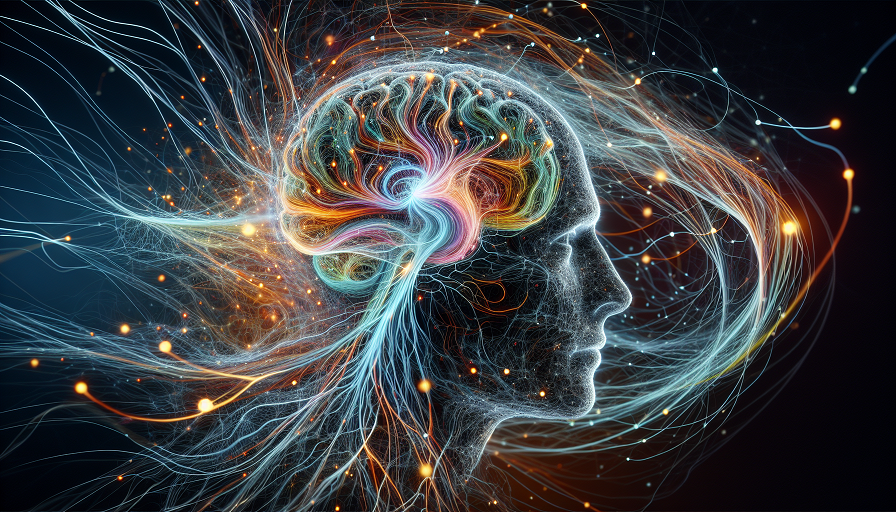
If you’ve ever listened to a beautiful symphony or a catchy pop song, you might be amazed by the creativity behind it and might wonder what makes it so captivating. Interestingly, some of this magic comes from the precise world of mathematics. It may sound surprising, but music theory and math share more in common than you might initially think. At the intersection of these two seemingly different fields, composers act much like scientists, using mathematical principles to create music that resonates with the human soul.
Contents
The Harmony of Math and Music
At first glance, mathematics and music might seem worlds apart. While one is grounded in logic and numbers, the other thrives on art and emotions. However, a closer look reveals that both follow a set of rules and patterns. Essentially, music theory provides the framework within which musicians work, and this framework is steeped heavily in mathematics.
Take, for example, the concept of rhythm. Music requires rhythm to create a structured flow, and this is expressed in time signatures, which are fractions. A common time signature, 4/4, indicates four beats in a measure, with the quarter note getting one beat. Much like solving a mathematical problem, musicians calculate how to fill each measure with notes that fit within these fractions.
Counting and Fractions
Counting is fundamental to both music and math. Musicians count beats and rhythm patterns, just as mathematicians count values and quantities. When you look at a piece of sheet music, you see notes of varying lengths—whole notes, half notes, quarter notes, and more. These indicate how long each note is held, much like fractions illustrate portions in math.
A whole note takes up an entire measure, while two half notes fill one measure together. This division is similar to how fractions work in mathematics, breaking down a whole into parts. Understanding these subdivisions is crucial for playing and composing music accurately.
Scales and Patterns
A musical scale is a sequence of notes in an ascending or descending order, much like a numerical sequence in math. The most common scale, the major scale, is based on a specific pattern of whole and half steps: whole, whole, half, whole, whole, whole, half. This pattern creates a familiar and pleasing sound. It’s much like a math formula that gives structure and predictability.
Furthermore, the arrangement of notes within a scale follows a strict set of rules. For instance, if you’re working within the C major scale, you can’t introduce random sharps and flats without altering the entire pattern, just as in math, where changing one number in an equation can affect the outcome.
Intervals and Ratios
In music, intervals are the distances between two notes and are critical elements in creating harmonies and melodies. Mathematically, these intervals can be translated into ratios. For instance, the octave, one of the most fundamental intervals, has a frequency ratio of 2:1. This means that one note vibrates exactly twice as fast as another note one octave below it.
This ratio concept extends beyond octaves. Each interval—whether it be a fifth, fourth, or third—can be expressed as a mathematical ratio, offering a precise numerical relationship. Recognizing these relationships allows composers to experiment with harmonies that sound pleasing to the human ear.
Patterns and Symmetry in Music
Symmetry and patterns are aesthetic principles found in both mathematics and music. Composers often use patterns to create coherence in their pieces. Repetition and symmetry can be found in musical forms like rondo and sonata form, where certain sections recur or mirror each other.
Mathematicians, too, value symmetry for its balance and predictability. The repetition of themes in music can be compared to the repetition of symmetrical objects in mathematics, offering a sense of completeness and order.
Algorithmic Composition
Modern composers sometimes use algorithmic processes to help create new music. These composers use computer algorithms based on mathematical models to compose pieces that may be too complex for the human mind to conceive unassisted.
By using algorithms, composers can explore new realms of musical creativity, much like mathematicians use equations to navigate complex problems. This shows that the relationship between math and music is not only historical but also innovative and futuristic.
The Mathematical Minds of Composers
Although composers may not always be mathematical geniuses, many of them think like scientists as they work. They experiment with different musical ideas, testing their concepts in much the same way scientists conduct experiments. They seek patterns, consider probabilities, and use logic to craft their compositions.
A famous example of this scientific thought process is seen in the work of Johann Sebastian Bach, whose “Goldberg Variations” are known for their mathematical precision. Bach’s compositions often involved intricate patterns and meticulous attention to structure, making them perfect studies of how music and math intertwine.
Inspiring Future Musicians
Understanding the connection between music and math can inspire new generations of musicians to explore innovative compositions. Appreciating the mathematical aspect of music opens doors to new ways of thinking about sound and structure.
Departments focusing on music education often include some mathematics, not only to develop students’ musical skills but also to encourage logical reasoning and problem-solving abilities, both of which are invaluable in a wide range of careers.
Enhancing Cognitive Abilities Through Music and Supplements
The intricate relationship between music and mathematics not only enriches our understanding of both fields but can also enhance our cognitive abilities. Just as mathematicians use numbers to solve complex problems, musicians use notes to convey intricate emotions and thoughts, stimulating brain activity and mental acuity. This stimulation can be further enhanced by integrating certain brain-boosting supplements into one’s routine.
Brain supplements, often referred to as nootropics, are designed to improve cognitive functions, such as memory, creativity, and focus. Many composers and musicians report that maintaining mental sharpness is crucial, especially when crafting complex compositions that require intense concentration and creativity. Popular supplements like Omega-3 fatty acids, Ginkgo Biloba, and Bacopa Monnieri have been associated with enhanced brain function and have gained popularity among those involved in demanding cognitive tasks.
Omega-3 fatty acids, found predominantly in fish oil, are known to support brain health by maintaining healthy cell membranes and reducing inflammation. Ginkgo Biloba, an ancient plant extract, has been used for centuries to improve memory and concentration. Bacopa Monnieri, a staple of traditional Ayurvedic medicine, is renowned for its memory-enhancing properties and ability to reduce anxiety, which can help musicians and composers navigate the pressures of creativity more effectively.
In the context of music and its mathematical underpinnings, these supplements can potentially sharpen a musician’s ability to decode complex patterns, remember intricate compositions, and perform with precision. When combined with regular mental exercises like solving puzzles or engaging in active listening, musicians can maintain peak mental performance, similar to how scientific research demands critical and analytical thinking.
The Future of Music and Mathematics
As we look towards the future, the combination of music and mathematics continues to offer exciting possibilities. With advancements in technology, such as artificial intelligence and machine learning, composers now have even more tools to explore new musical landscapes. AI-powered composition software can analyze vast databases of music to find new patterns and suggest novel combinations of notes and rhythms, giving rise to innovative pieces that transcend traditional boundaries.
Similarly, research into the effects of sound waves on brain function might lead to new therapeutic uses for music, where specific frequencies and patterns are tailored to enhance mental health or cognitive performance. This advances the intersection of music theory, mathematics, and neuroscience, further affirming the integral role of numbers in creating harmony, both in music and within our minds.
As we continue to explore these intersections, musicians and mathematicians alike will have the opportunity to delve deeper into the endless possibilities that arise when creativity and logic converge. Whether through newfound compositions, enhanced cognitive abilities via brain supplements, or emerging technologies, the journey between music and mathematics remains as captivating and boundless as ever.

